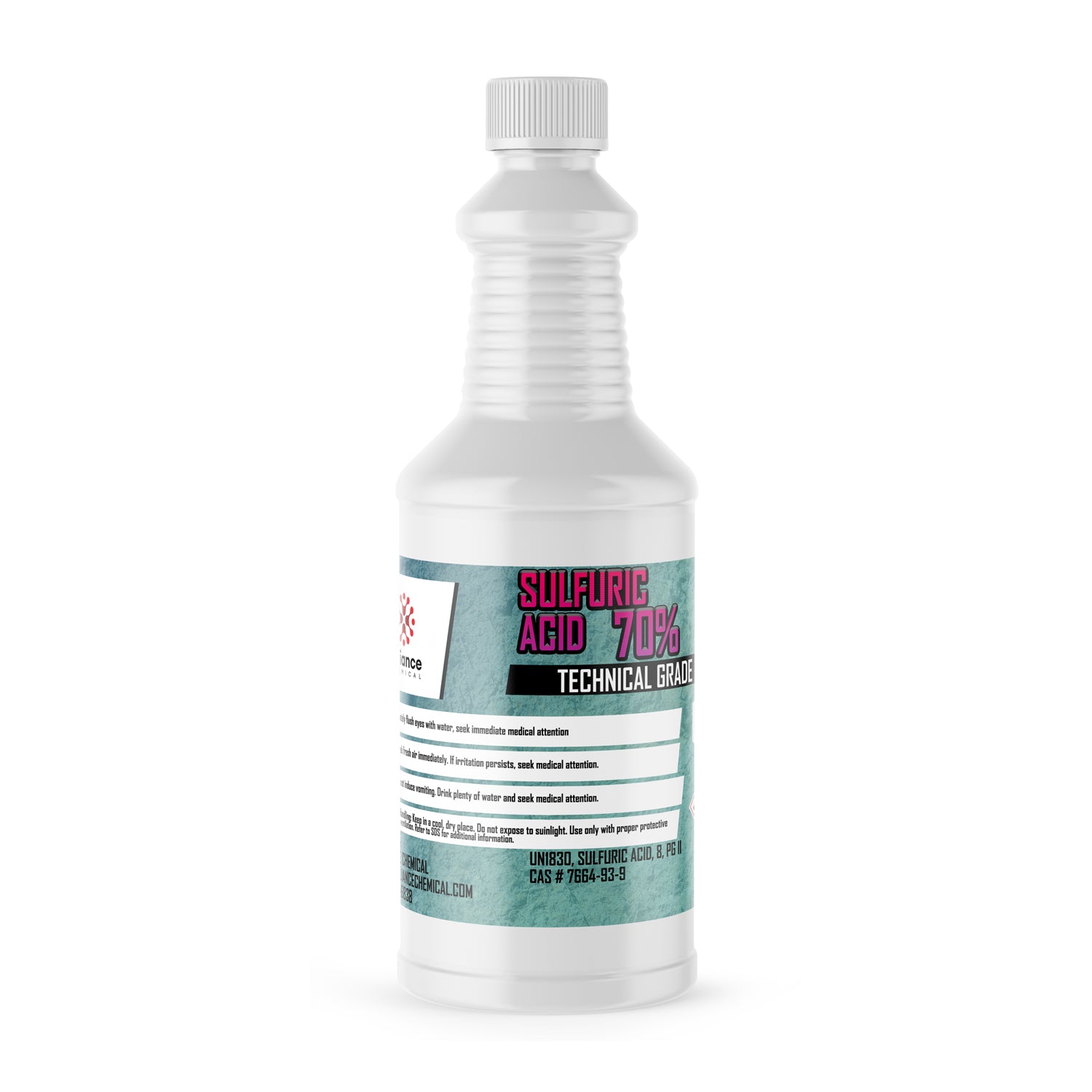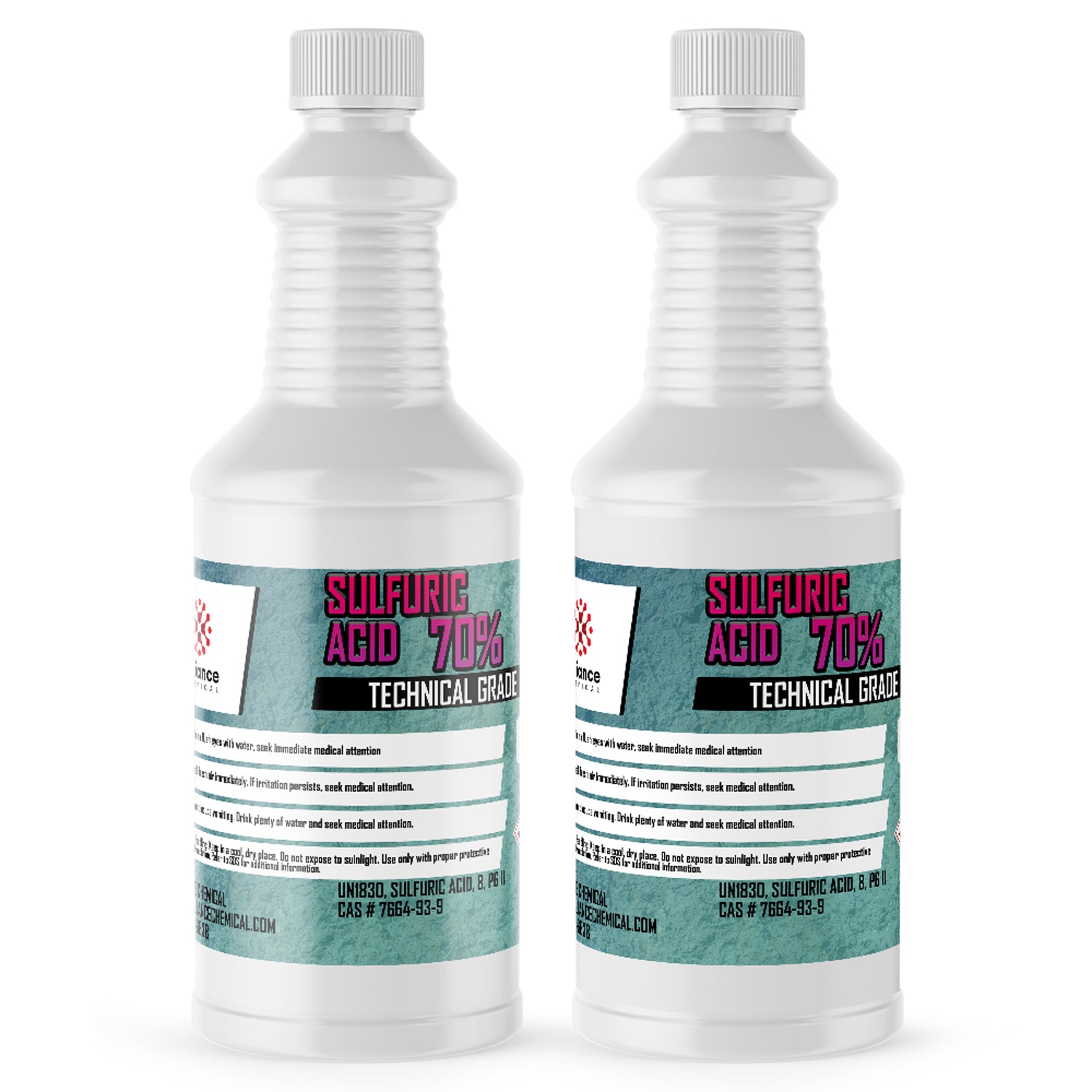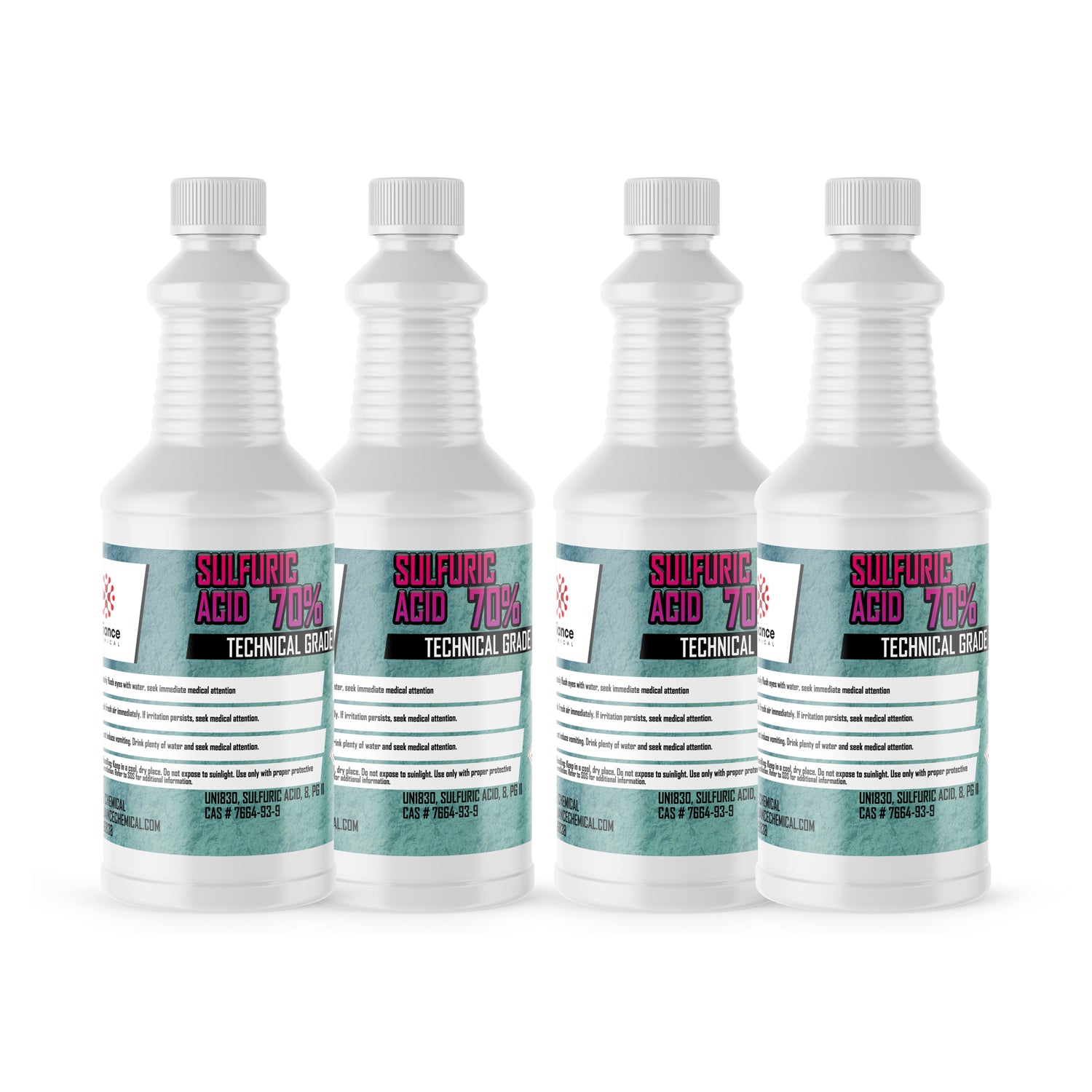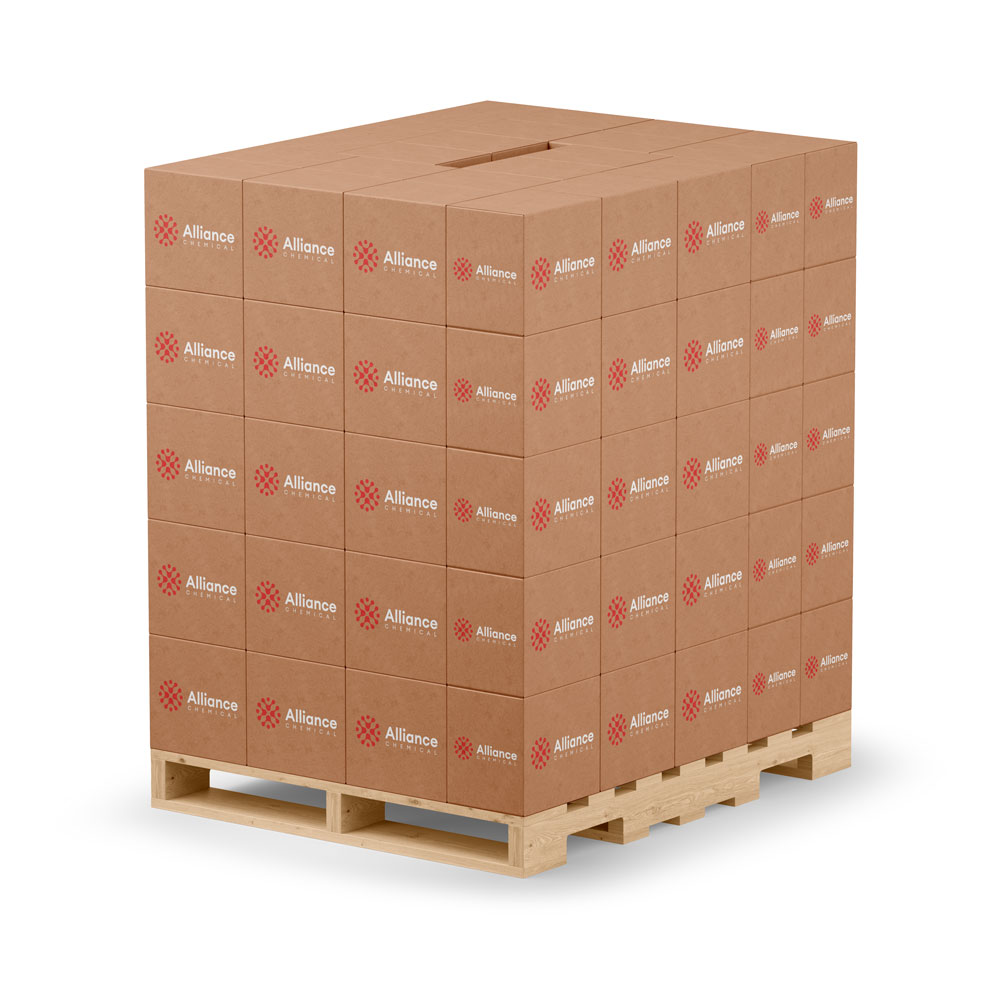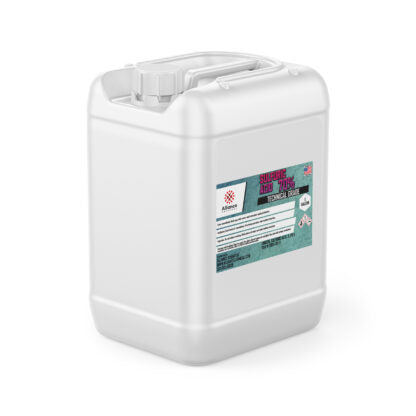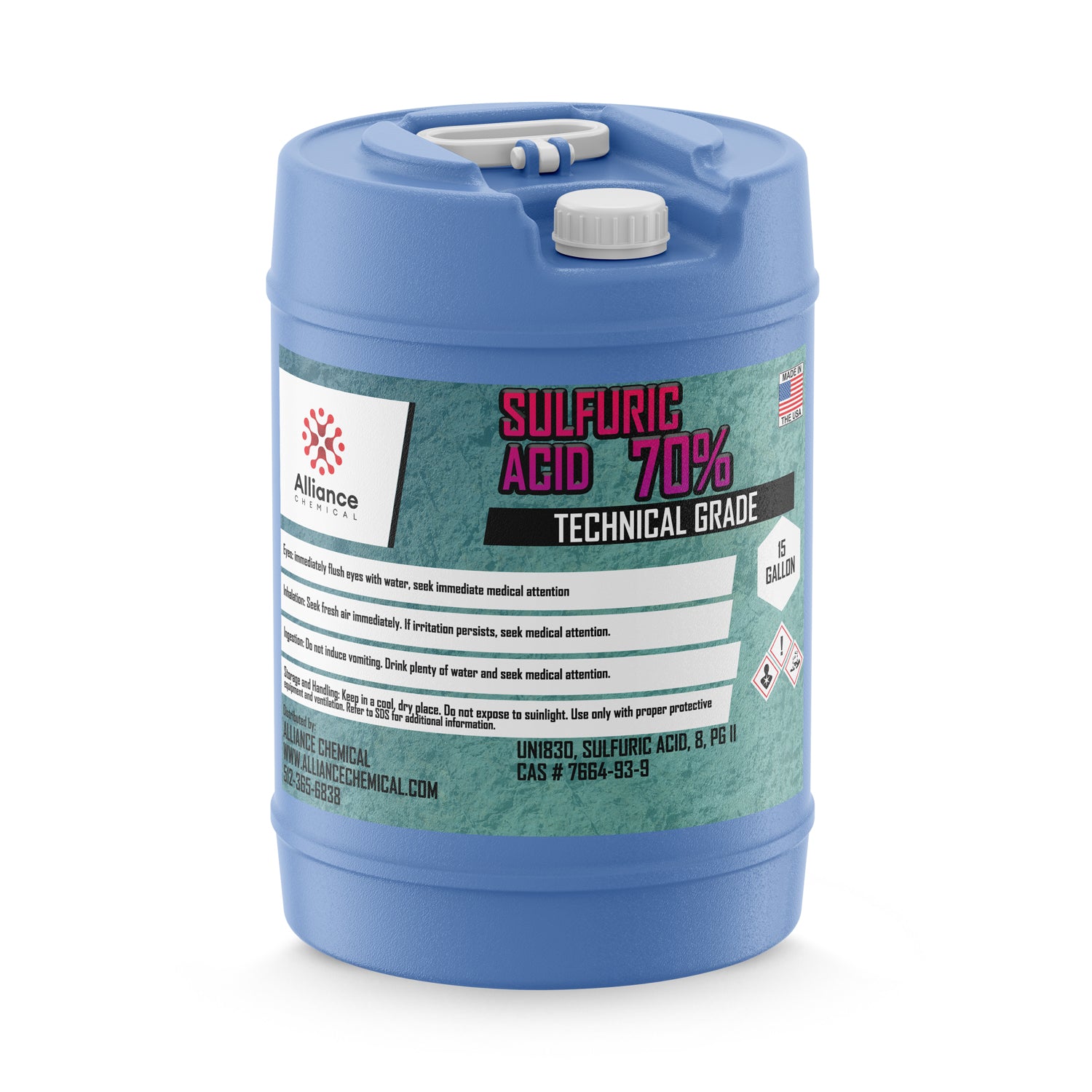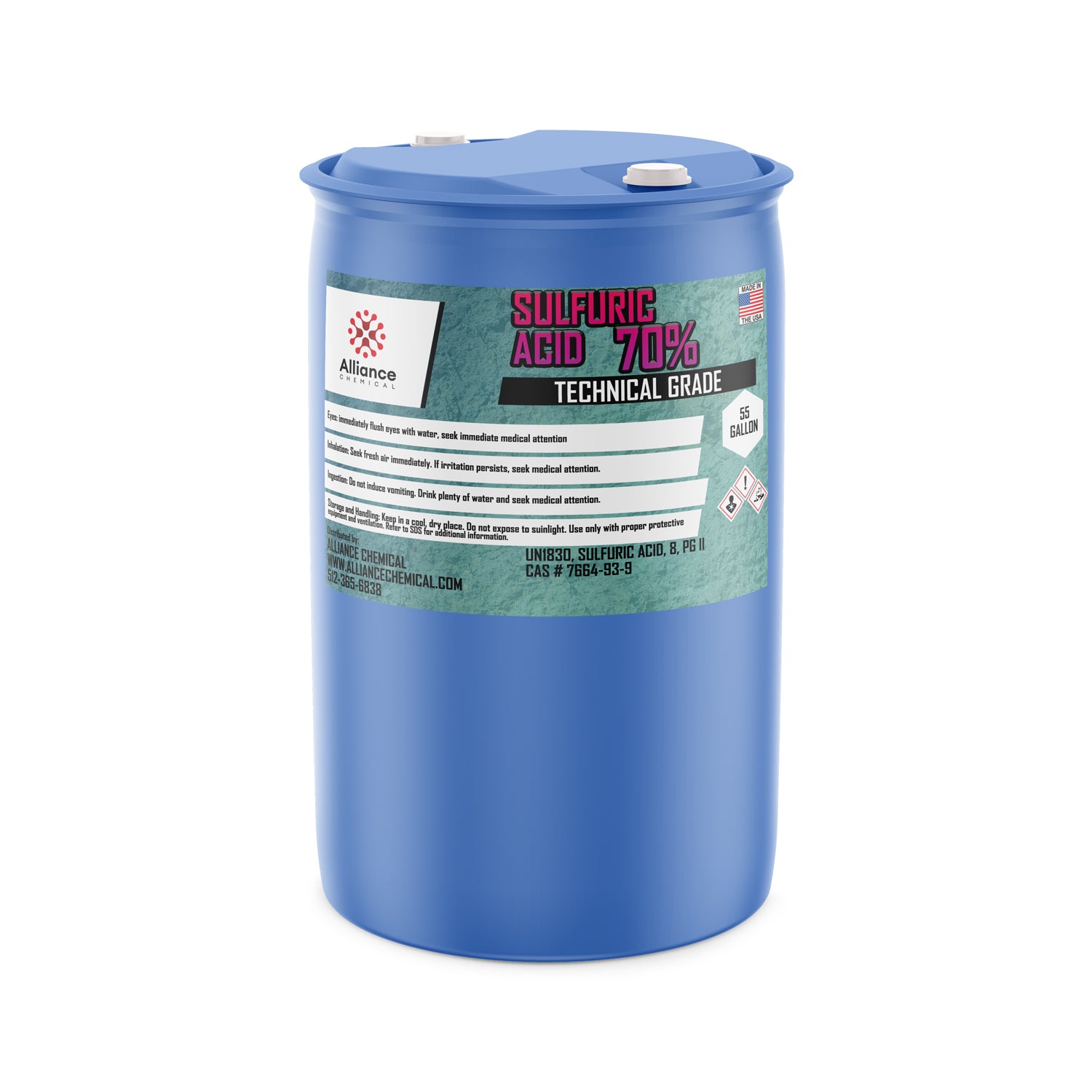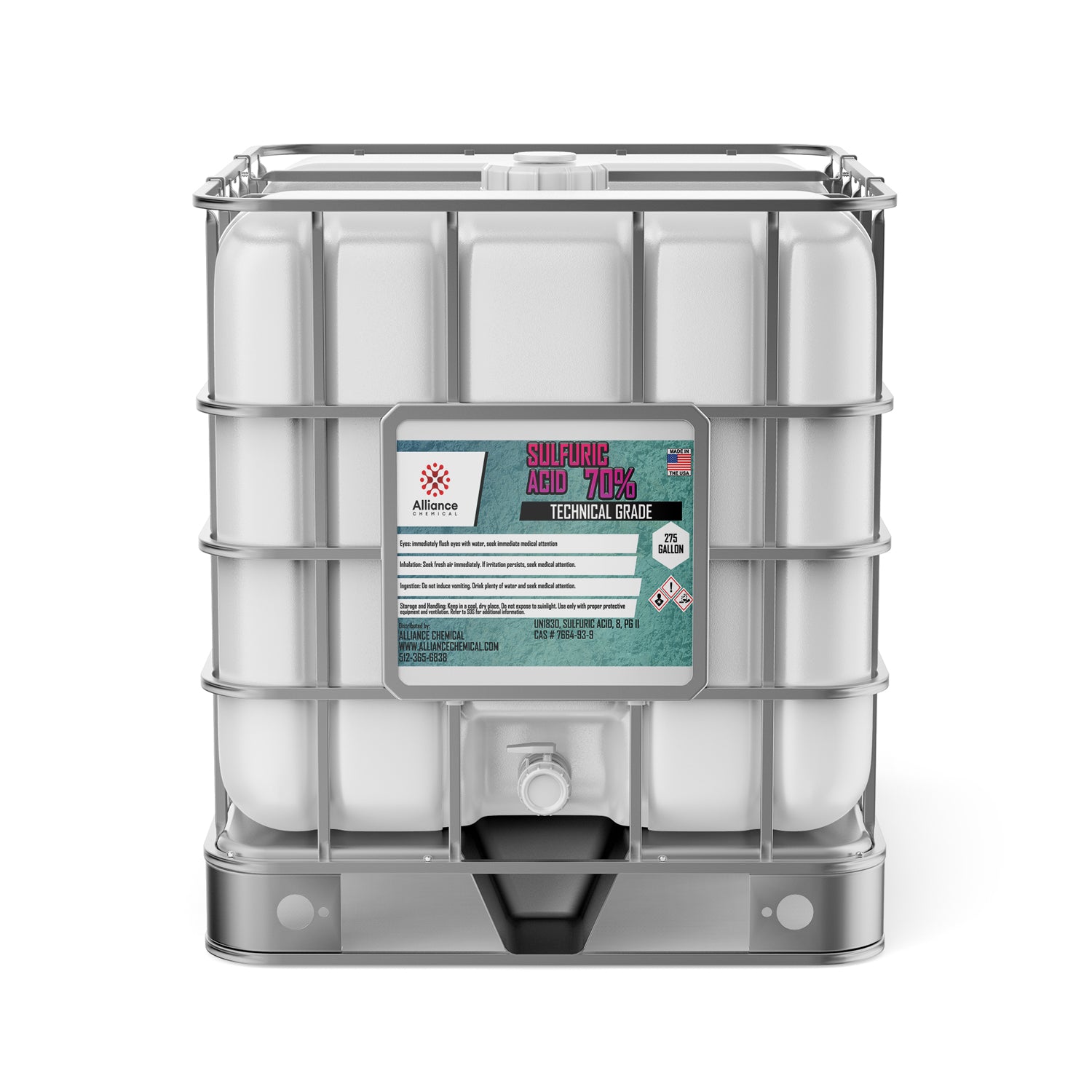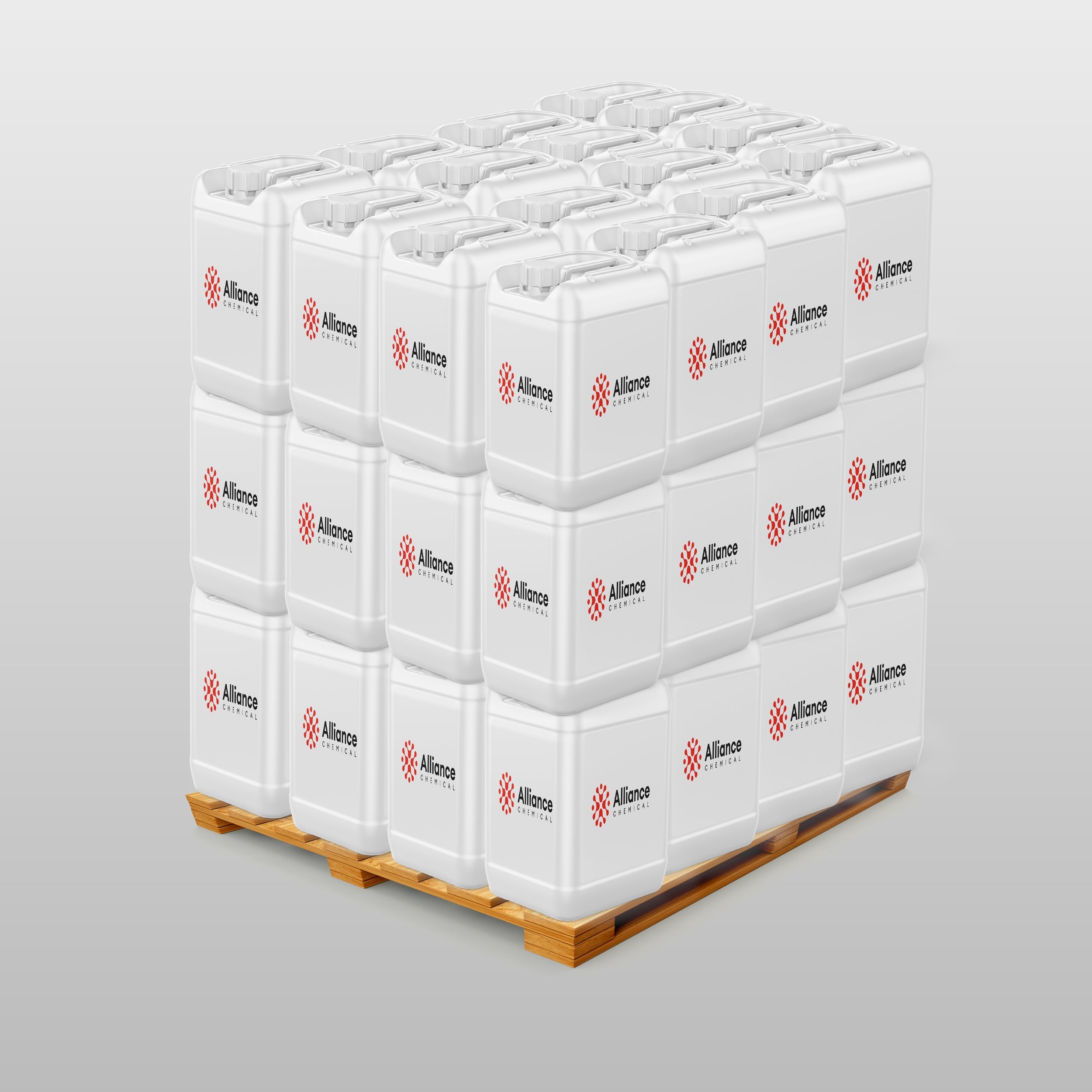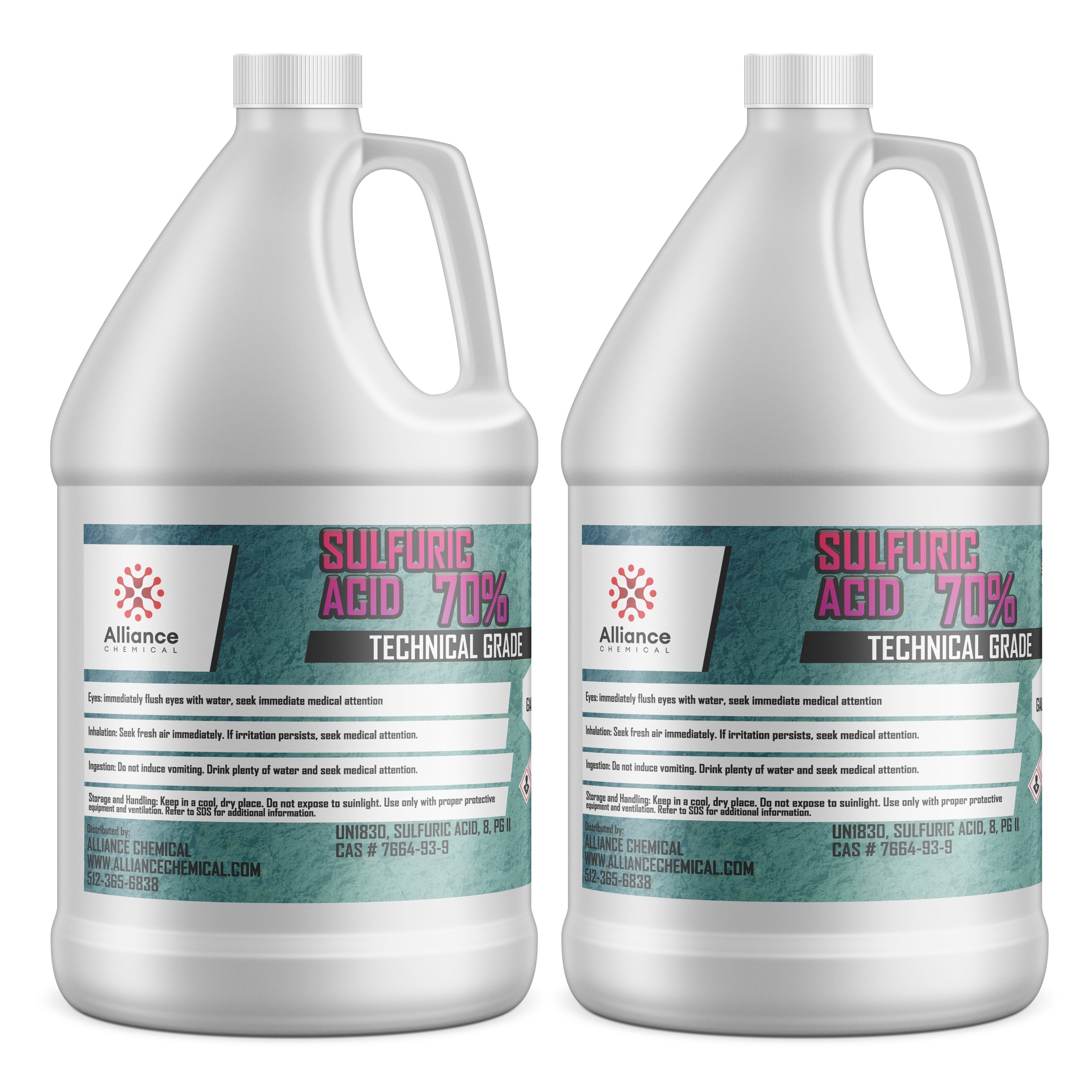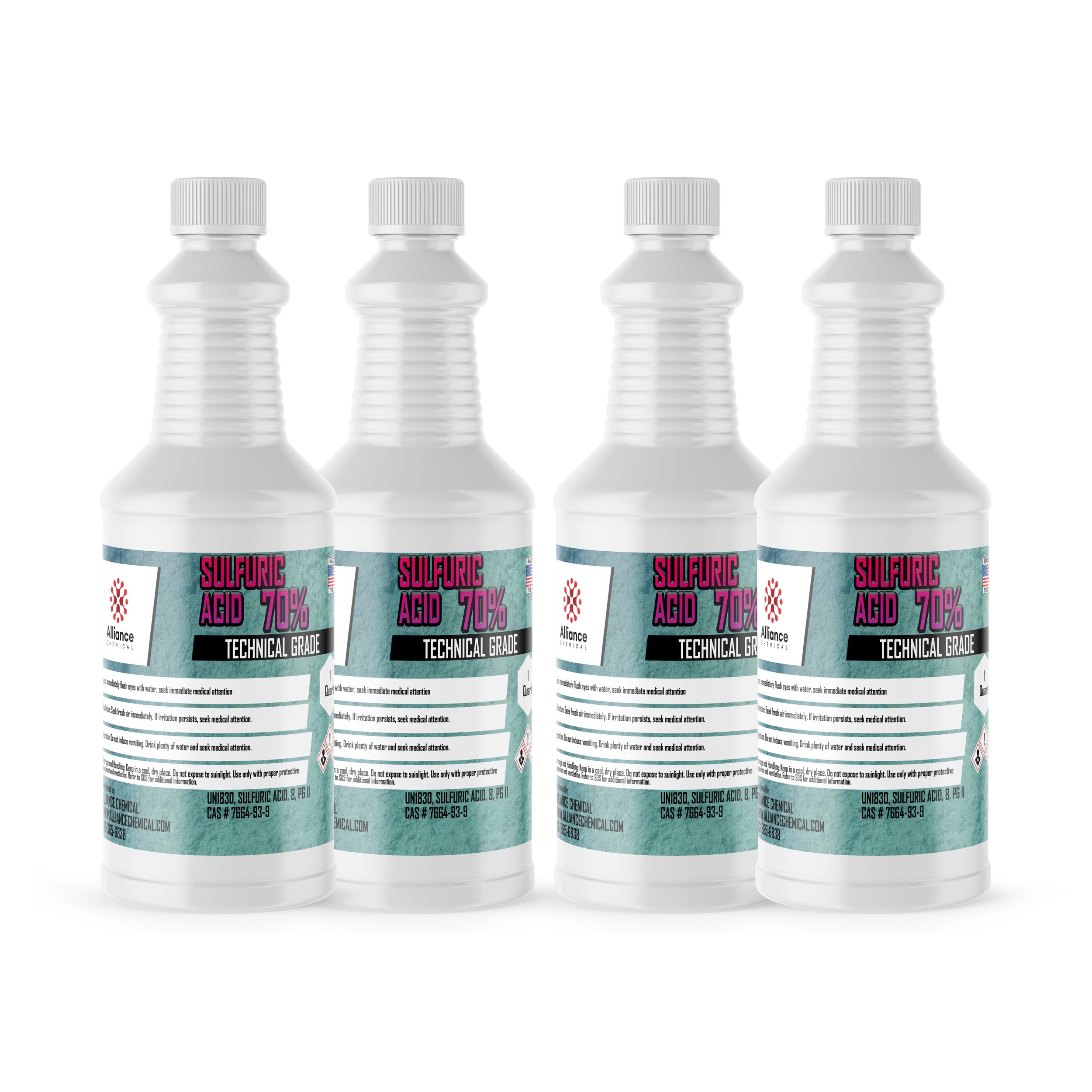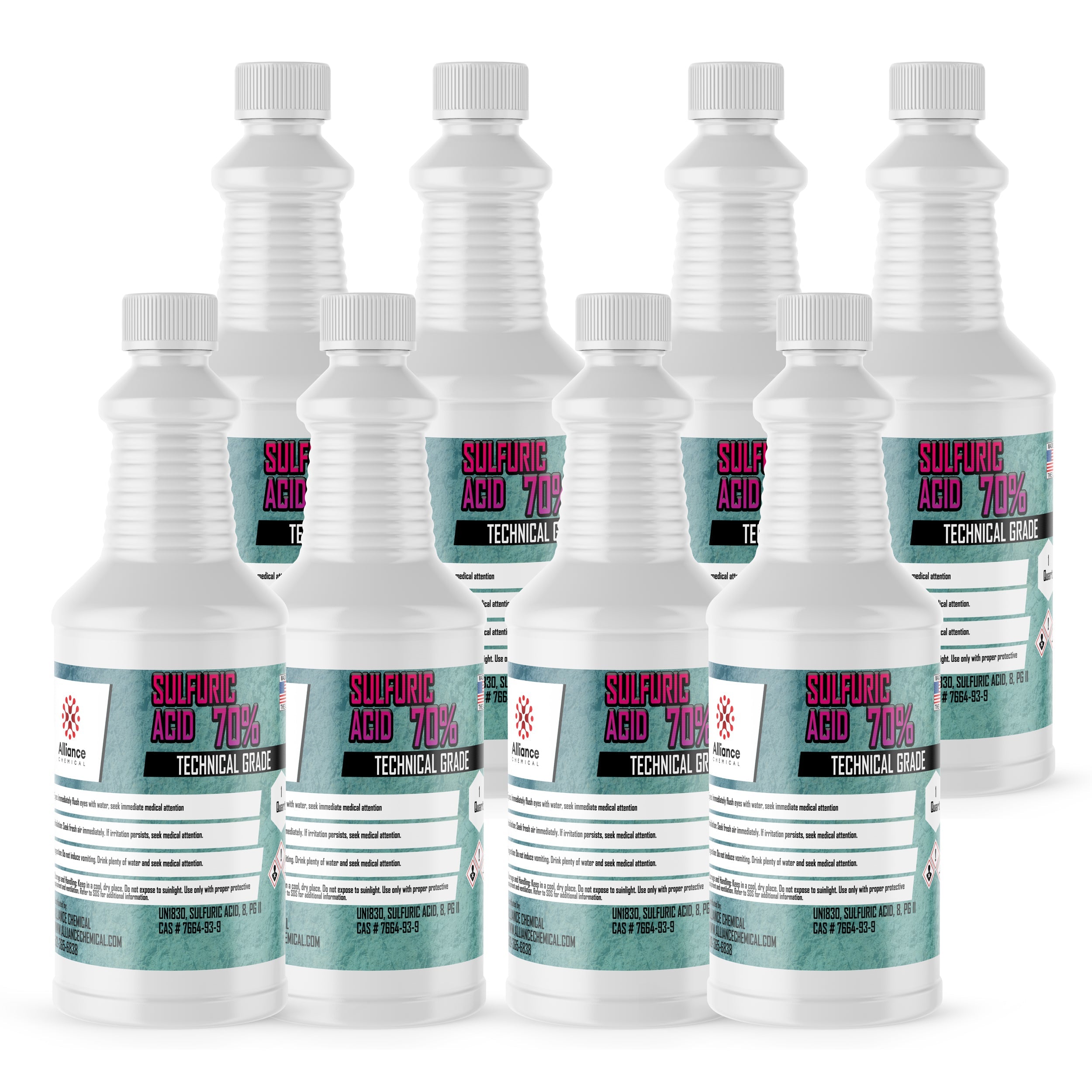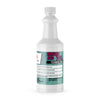Ask a question
Product Overview
Sulfuric Acid 70% (H₂SO₄) is a highly corrosive, strong mineral acid with dehydration power and robust oxidizing capabilities. The 70% solution provides a balance of reactivity and manageable viscosity for broad industrial use, enabling reliable dosing and mixing in process streams. Our product is delivered with stringent control of impurities to support performance in chemical synthesis, electrochemical systems, and process pH control. Typical assay is 70% by weight, with low residue after ignition and minimal trace metals, aligning with ACS Reagent Grade expectations and USP-NF monograph compliance where applicable. The solution exhibits a moderate density at 25°C and a high exothermic response upon hydration, requiring appropriate containment and venting practices during handling and transfer. This specification supports repeatable results in lead-acid battery electrolytes, dehydration steps in organic synthesis, and pH adjustment in water treatment workflows.
In line with industry standards, the product is designed for use under controlled conditions in well-ventilated facilities, with corrosion-resistant containment materials such as HDPE or glass. The viscosity and density values support pumpability across standard industrial equipment, while the low heavy metal content minimizes contamination risk in sensitive applications. Product quality is sustained through rigorous quality control, including titration-based assay, APHA color assessment, and trace metal analysis by ICP-OES or IC methods according to the documented test methods.
Key Properties
- Product Code: SULFURIC_ACID_70
- Synonyms: Sulfuric Acid Solution; Oil of Vitriol
- Chemical Formula: H₂SO₄
- Molecular Weight: 98.08 g/mol
- Boiling Point: 337°C
- Specific Gravity (20°C): 1.25–1.30 (typical 1.28)
- Density (25°C): 1.184 g/mL
- Vapor Pressure (20°C): 0.3 mmHg
- Viscosity (25°C): 20.1 cP
- Assay wt% (min–max): 69–71% (typical 70%); Test Method: Titration with standardized NaOH
- Color (APHA): Max 20 (typical 6); Test Method: APHA/Hazen visual comparison
- Residue After Ignition: Max 0.05% (typical 0.01%); Test Method: Gravimetric analysis after ignition at 550°C
- Chloride (Cl⁻): Max 10 ppm (typical 5 ppm); Test Method: IC or ICP-OES
- Nitrate (NO₃⁻): Max 5 ppm (typical 2 ppm); Test Method: IC
- Ammonium (NH₄⁺): Max 1 ppm (typical 0.5 ppm); Test Method: IC
- Sulfate (SO₄²⁻): Max 1000 ppm (typical 200 ppm); Test Method: IC or IC-ES
- Arsenic (As): Max 0.01 ppm (typical 0.005 ppm); Test Method: ICP-MS
- Heavy Metals (as Pb): Max 0.5 ppm (typical 0.1 ppm); Test Method: ICP-MS
- Iron (Fe): Max 0.5 ppm (typical 0.1 ppm); Test Method: ICP-OES
- Chromium (Cr): Max 0.2 ppm (typical 0.05 ppm); Test Method: ICP-OES
- Lead (Pb): Max 0.2 ppm (typical 0.05 ppm); Test Method: ICP-OES
- Copper (Cu): Max 0.5 ppm (typical 0.1 ppm); Test Method: ICP-OES
- Sodium (Na): Max 5 ppm (typical 2 ppm); Test Method: ICP-OES
- Potassium (K): Max 5 ppm (typical 2 ppm); Test Method: ICP-OES
- Magnesium (Mg): Max 5 ppm (typical 2 ppm); Test Method: ICP-OES
- Calcium (Ca): Max 5 ppm (typical 2 ppm); Test Method: ICP-OES
- Phosphate (PO₄³⁻): Max 50 ppm (typical 20 ppm); Test Method: IC
- Aluminum (Al): Max 0.5 ppm (typical 0.1 ppm); Test Method: ICP-OES
- Cobalt (Co): Max 0.1 ppm (typical 0.02 ppm); Test Method: ICP-OES
- Nickel (Ni): Max 0.2 ppm (typical 0.05 ppm); Test Method: ICP-OES
- Sulfate/Phosphate/Heavy metals: Included in specification checks to ensure low contamination
Common Applications
- Application Category: Electrolyte in Lead-Acid Batteries – Used as the electrolyte in lead-acid batteries for energy storage and power supply in automotive and stationary systems.
- Chemical Synthesis: Reagent in production of chemicals including fertilizers and specialty compounds; supports dehydration and oxidation steps in manufacturing processes.
- pH Adjustment: Used to adjust pH in wastewater and industrial process streams, enabling control of precipitation and corrosion conditions.
- Catalyst in Organic Reactions: Facilitates certain organic transformations, improving reaction rates and selectivity under controlled conditions.
- Dehydrating Agent: Employed in laboratories and industry to remove water from organic and inorganic systems; important for drying steps in synthesis.
- Desilication and Cleaning: Used in pickling and surface preparation where acidity drives metal surface reactions.
- Pulp and Paper Processing: pH control and chemical processing in certain intermediate steps (where compatible with material handling).
- Petrochemical Processing: Catalyst support and acid-catalyzed reactions in refining and processing streams under strict safety controls.
Safety Precautions
Handling and storage require strict adherence to corrosion safety protocols. Store in a cool, dry, well-ventilated area away from incompatible materials, using corrosion-resistant containers such as HDPE or glass. Ensure containers are clearly labeled, segregated from bases and reducing agents, and kept in secondary containment to mitigate leakage. Always wear appropriate PPE including chemical splash goggles, face shield if splashing risk exists, chemical-resistant gloves, and a lab coat or apron. Operate within a fume hood or adequately ventilated area to minimize inhalation exposure, and implement emergency eyewash and safety shower access in the immediate work zone.
During handling, use proper transfer equipment designed for high acidity, with compatible gaskets and seals to prevent leaks. Follow procedures for safe storage temperature ranges and monitoring to avoid thermal runaway in equipment subjected to acid exposure. In case of contact with skin or eyes, rinse immediately with large volumes of water for several minutes and seek medical attention. If inhaled, move to fresh air and seek medical assessment if symptoms persist. Do not induce vomiting in case of ingestion and seek urgent medical care. Refer to the SDS for detailed hazard statements and first aid measures: H314, H290, H335, UN 1830, and related transport and storage guidelines.
Benefits
✔ High Purity and Reagent-Grade Quality – Meets ACS Reagent Grade specifications; suitable for sensitive chemical synthesis and analytical applications.
✔ Controlled Impurity Profile – Low heavy metals and trace anions to minimize contamination in battery electrolytes and process streams.
| Property | Value |
|---|---|
| Molecular Weight | 98.08 g/mol g/mol |
| Formula | H2SO4 |
| Assay | 70% |
| Grade | Technical |
| Flash Point | Not applicable |
| Form | Liquid |
| Solubility | Complete water miscibility, strong acid interaction |
| Appearance | Clear viscous liquid |
| Melting Point | 10°C °C |
| Boiling Point | 337°C °C |
| Specific Gravity | 1.607 |
| Industry | Industrial, Wastewater, Chemical Processing |
EBD-NTP-F97
$24.38
Unit price
Compare Products
| Price |
|---|
| SKU |
| Rating |
| Discount |
| Vendor |
| Tags |
| Weight |
| Stock |
| Short Description |

